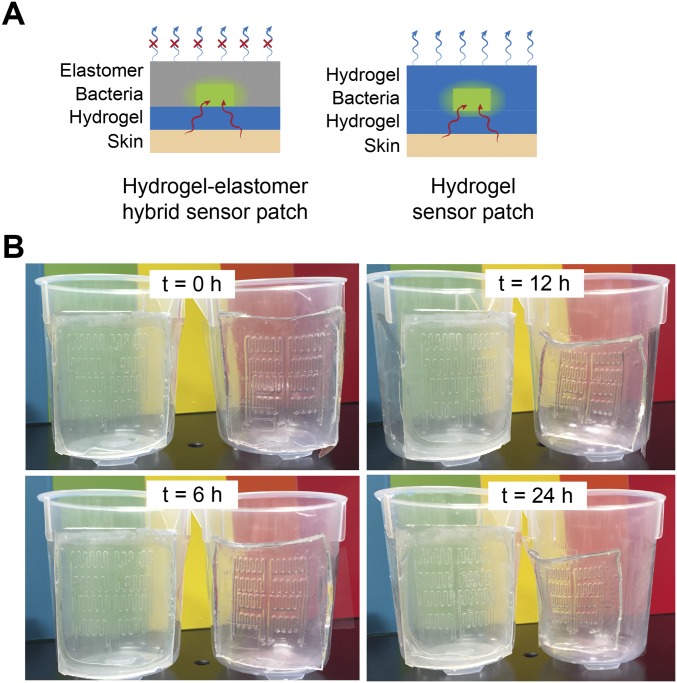Fig. S8.
Antidehydration property of the sensor patch. (A) Schematic illustration of the hydrogel–elastomer hybrid sensor patch, which has the antidehydration property over the pure hydrogel device. The silicone elastomer cover effectively prevents evaporation of water from the hydrogel and dehydration of the living patch. (B) Time-lapse snapshots of hydrogel–elastomer hybrid sensor patch (Left) and pure hydrogel sensor patch (Right) mounted on a plastic beaker at room temperature with low humidity (25 °C and 50% relative humidity) for 24 h. The elastomer outer layer of the hydrogel–elastomer hybrid device significantly slowed down the dehydration process of the hydrogel and provided a sustained humid environment for encapsulated cells for over 24 h. However, distorted channels became apparent on patches made of pure hydrogels when they were exposed to air for 6 h because of dehydration.

